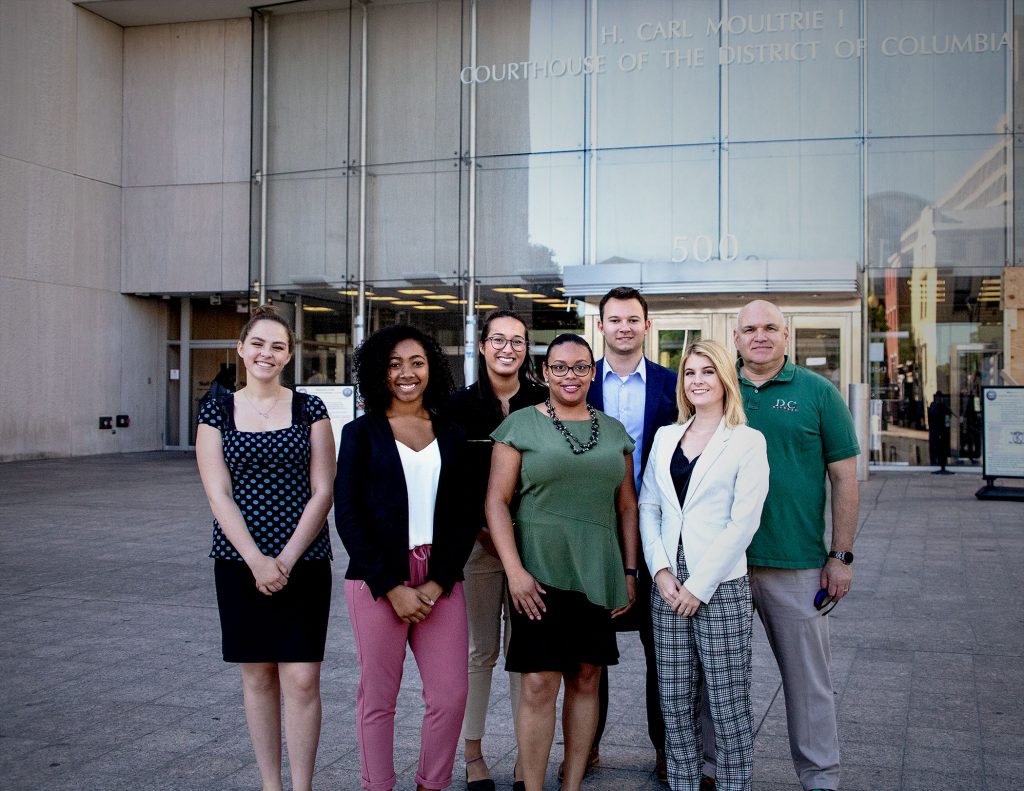
Thank you for reading D.C. Witness. Help us continue our mission into 2024.
Donate NowBy
D.C. Witness Staff
- June 19, 2019
Featured
|
From the Washington Post:
June 18 at 7:00 AM
Since 2015, a group of aspiring young journalists has chronicled every homicide in the District on the site D.C. Witness. No killing goes unnoticed. Every victim gets a story, usually accompanied by a photo. Every arrest. Every courtroom hearing. Every verdict. That gets reported, too.
The result is a view of killings as cause for both alarm and sadness.
The stories are brief, but they provide an opportunity for people to see that their loved one existed.
“Through our work, we can see how a homicide can affect people who live throughout the city, sometimes the region,” said LaTrina Antoine, editor in chief at D.C. Witness. “People who are killed usually have lots of family and friends here.”
During the past four years, D.C. Witness has reported on 641 homicides in the city — a count that tracks closely with stats published by the D.C. police department. That’s more than the 550 people killed in mass shootings in the country, from the Sandy Hook massacre in 2012 to the Virginia Beach killings in May.
Mass shootings strike terror because the public never knows when or where one might happen. But D.C. Witness reporters know from covering the trials of homicide victims that there is also terror in living in a neighborhood where killings are all too frequent, where a fatal gunshot could be precipitated by no more than a perceived slight.
“The District is actually a safe city, but not if you’re a young black man between 18 and 27,” said Amos Gelb, founder and publisher of D.C. Witness.
“I see it constantly in the courtroom,” Antoine added. “Black men saying if they weren’t going to be the perpetrator they were going to end up being the victim. And you see the tears of the family. I’ve seen so many tears, and I just keep adding more black male victims to the website.”

D.C. Witness covers every murder in the District. From left, writers Annie Brennan, Regina Woolridge, editor in chief LaTrina Antoine and writer Julia Guercio. Back row from left, writers Nick Slater, Brooke Welsh and publisher Amos Gelb. (Brooke Welsh/D.C. Witness)
Gelb started the website to provide journalism and law school students internships where they could learn how a courtroom works and write about it. He soon saw a need to provide more information about developments in homicide cases — especially for the family and friends of those involved in the tragedy. The work is also supported with grants from the Poynter Institute for Media Studies and the Charles Koch Foundation.
He first hired three students, then later increased that number to five to work with Antoine and an assistant editor as court reporters.
D.C. Witness focuses on a steadily growing mountain of human life cut short.
[Tracking D.C.-area homicides]
For instance, combing the homicide tallies for three years — from 2015 to 2017 — there were 339 black males killed in the District, compared with 11 white males, according to D.C. police. During that same period, 36 black women were victims of homicide, compared with four white women.
On average, about 30 percent of homicide cases remain unsolved, according to police statistics.
The primary agencies that handle homicide cases — the D.C. police, the U.S. attorney’s office and D.C. Superior Court — have websites that provide the basic facts about a killing — who was killed, when they were killed, trial dates. Family members need that information, but much more.
D.C. Witness combines data from all three agencies and follows each case as it makes its way through the criminal justice system. The information includes daily updates on court proceedings.
Asked what drives her, Antoine recalled how she had been affected by homicide.
In 2002, she was in an automobile accident that left her in a coma, she said. When she came out of it, she learned that her father, Richard Antoine, 54, had been shot and killed. (His killer was arrested and convicted of reckless use of a firearm.)
“I didn’t know what had happened and getting answers from my family was really difficult,” she recalled. “Part of the reason was they didn’t want to talk about it but also they hadn’t been able to get answers either. That’s what motivates me. Helping families get answers about their cases and telling the stories.”
Gelb had his motivation as well.
“My son just graduated from Wilson [High School in Northwest Washington], and he knew Breon Austin and Jamahri Sydnor,” he said.
Austin, 16, was shot and killed inside his Northwest Washington home in April. Sydnor, 17, was a cheerleader at Wilson and was shot and killed by a stray bullet in 2017.
There was more.
“On the school bus, on his way to a football game, one of my son’s teammates got word that his dad had been shot at a Metro station,” Gelb said. “And I’m thinking, ‘This is my kid, this is my city; we have to do more to put an end to this.’ ”
